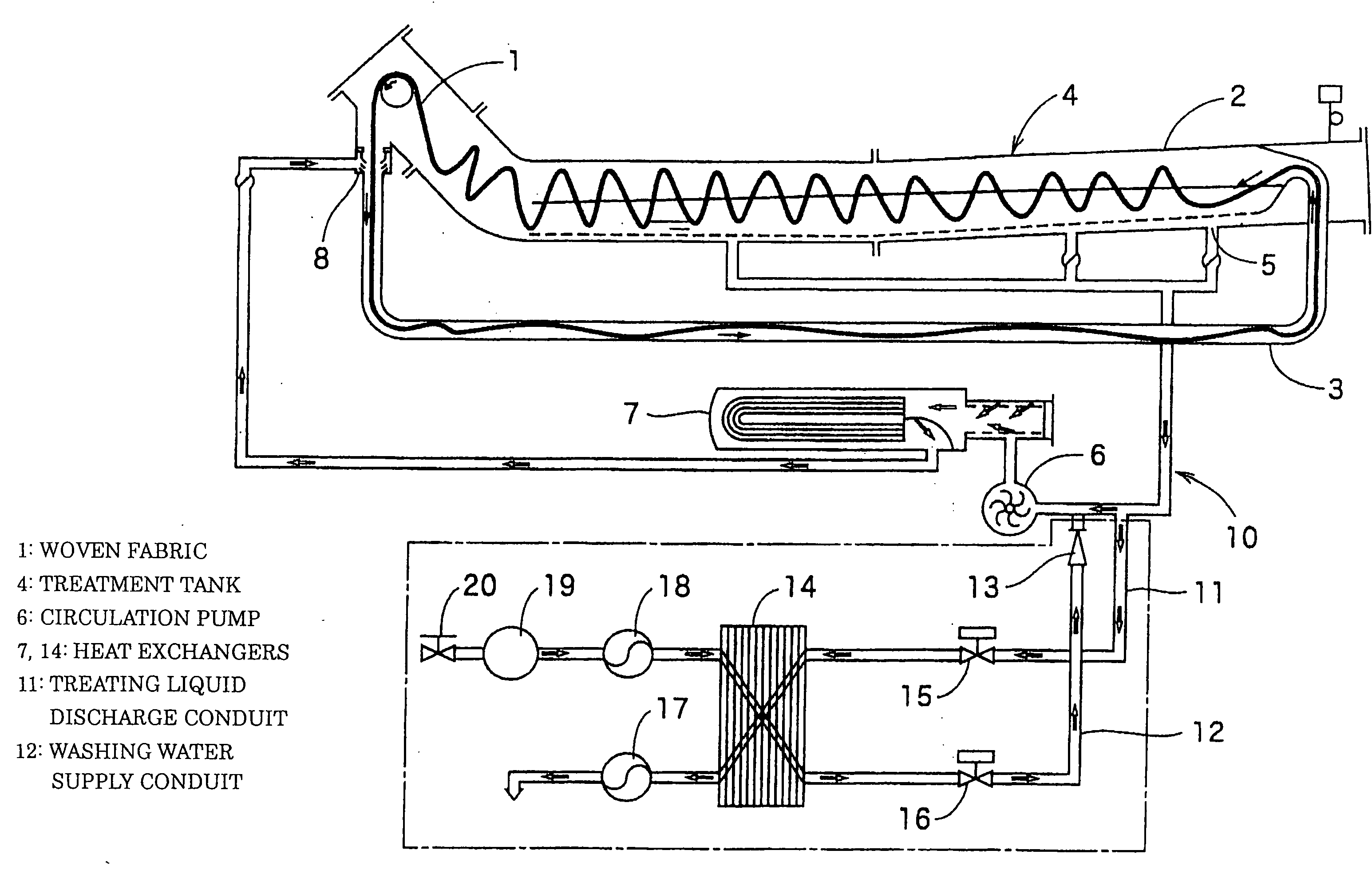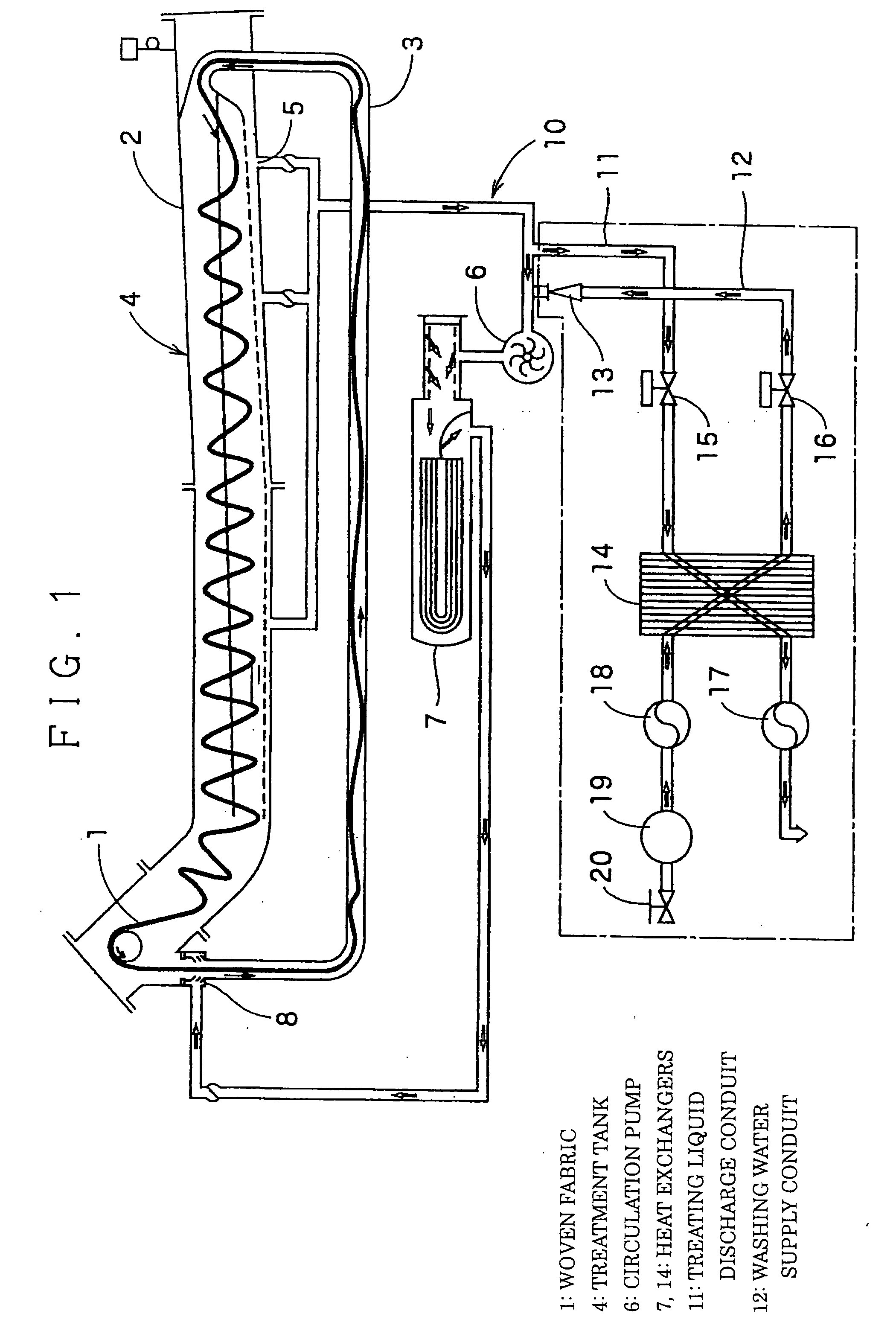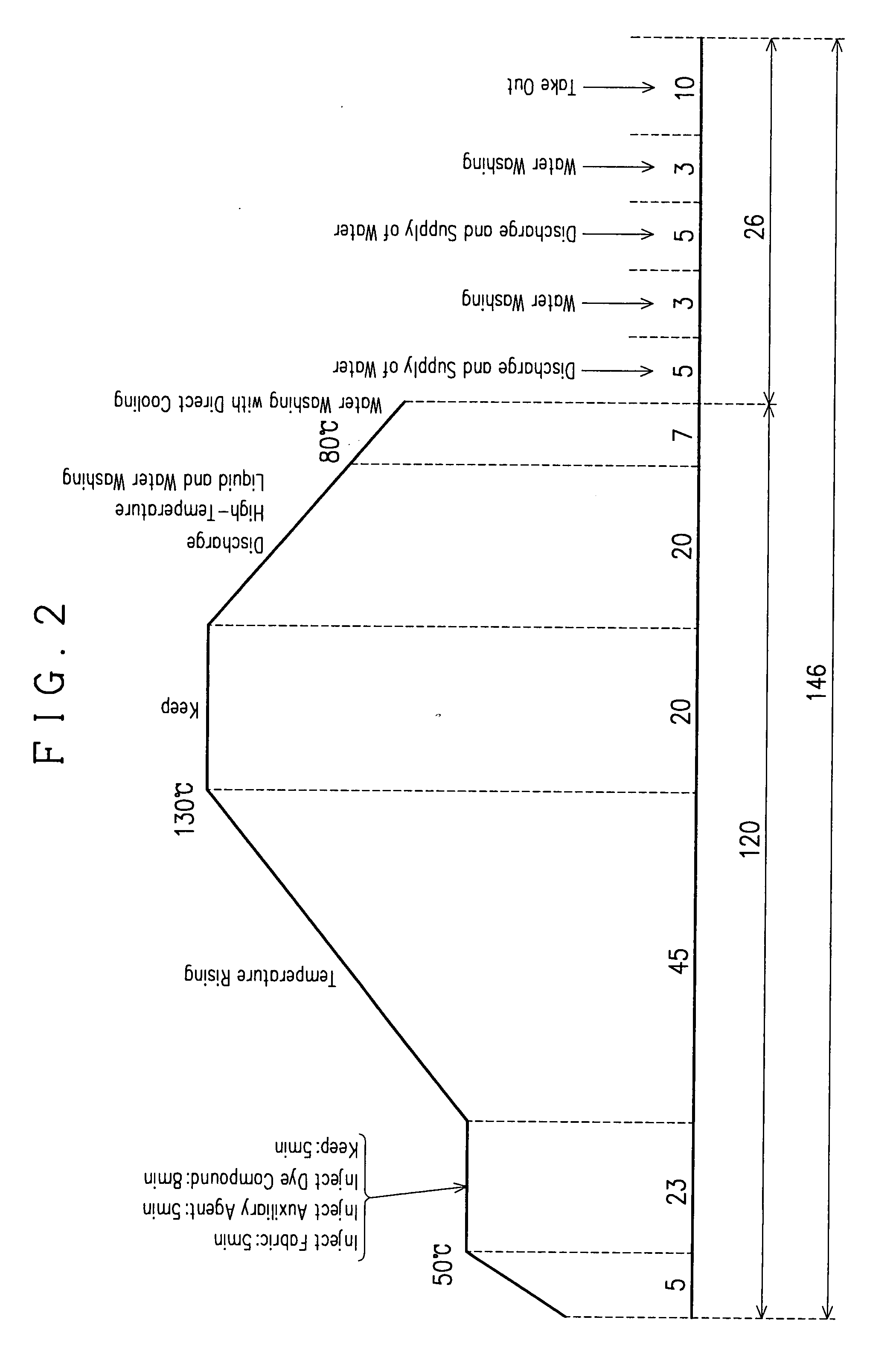Method of washing a textile product and textile product treatment apparatus used therefore
- Summary
- Abstract
- Description
- Claims
- Application Information
AI Technical Summary
Benefits of technology
Problems solved by technology
Method used
Image
Examples
example
Example
[0043]The dyeing and washing of a textile product was carried out following the conditions mentioned below by using a liquid current treatment apparatus as illustrated in FIG. 1.
[0044]Textile product: polyester woven fabric (plain fabric of polyester yarn 56 dtex / 48f) 100 kg
[0045]Progress schedule: following FIG. 2
[0046]Chemical agents used in the dyeing step:[0047]Dye compound: 5 kg[0048]Dispersing agent (Nicca Sunsalt RM-340, made by Nicca Chemical Co., Ltd.): 600 g[0049]Acetic acid: 600 g
[0050]Liquor-goods ratio: 1 / 12
PUM
 Login to View More
Login to View More Abstract
Description
Claims
Application Information
 Login to View More
Login to View More - R&D
- Intellectual Property
- Life Sciences
- Materials
- Tech Scout
- Unparalleled Data Quality
- Higher Quality Content
- 60% Fewer Hallucinations
Browse by: Latest US Patents, China's latest patents, Technical Efficacy Thesaurus, Application Domain, Technology Topic, Popular Technical Reports.
© 2025 PatSnap. All rights reserved.Legal|Privacy policy|Modern Slavery Act Transparency Statement|Sitemap|About US| Contact US: help@patsnap.com



